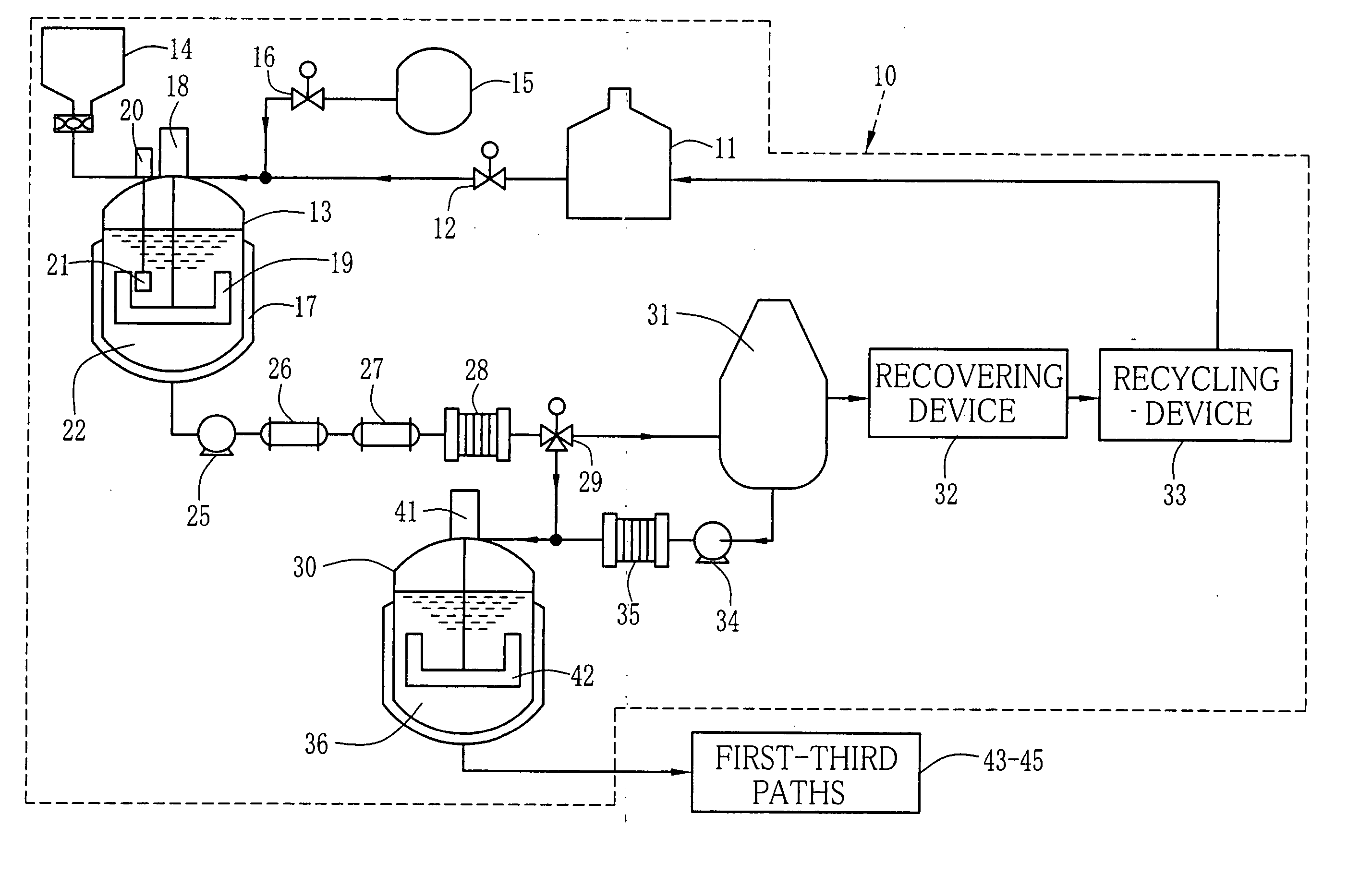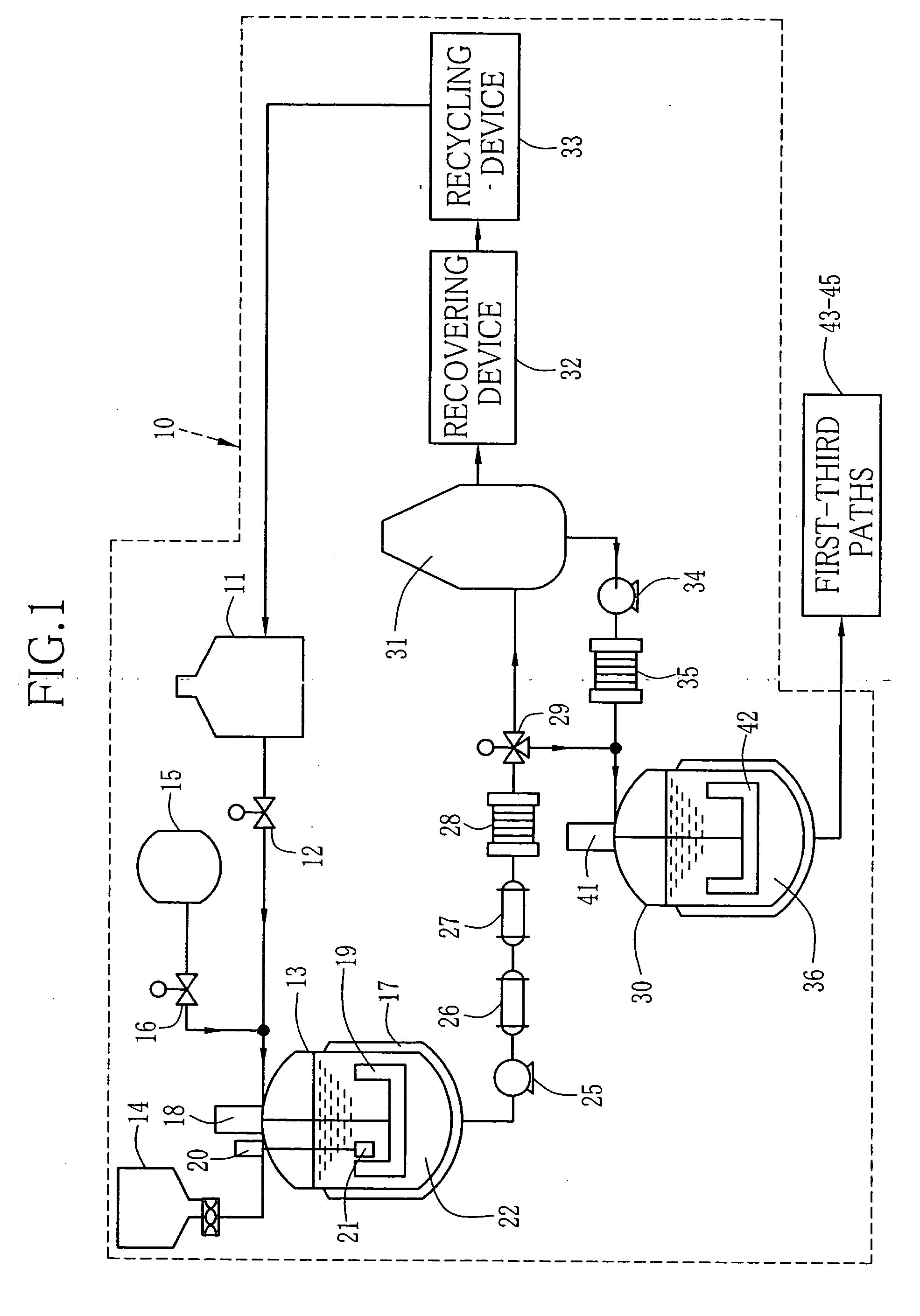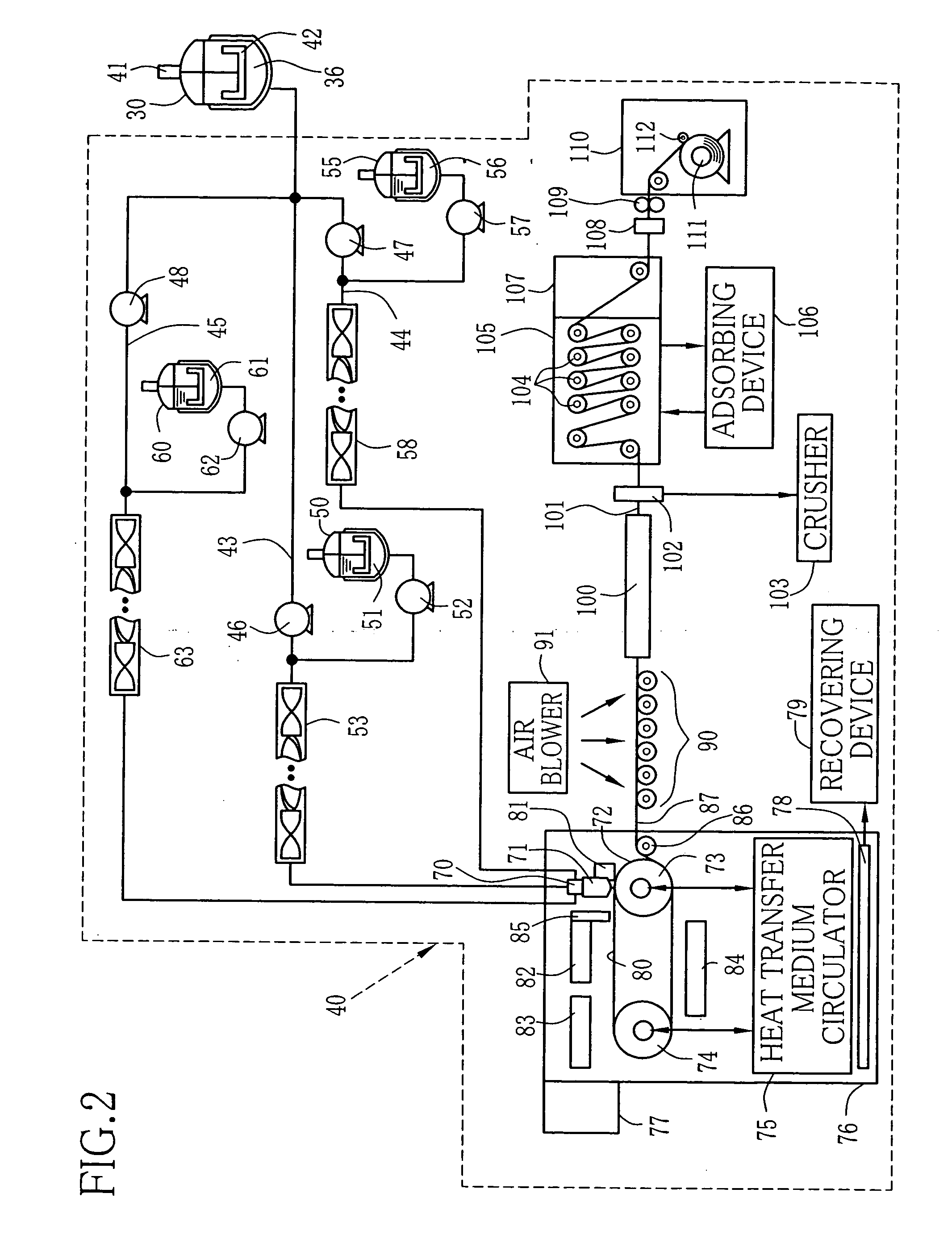Method and apparatus for producing dope and solution casting method
a technology of liquid crystal display and solution casting, which is applied in the direction of emulsification, transportation and packaging, and other domestic objects, can solve the problems of poor influence of mixing unevenness of additives on display, inability to perform stirring ecciciently, and inability to achieve effective stirring, improve the view angle dependence of liquid crystal display, and reduce the size of the production process
- Summary
- Abstract
- Description
- Claims
- Application Information
AI Technical Summary
Benefits of technology
Problems solved by technology
Method used
Image
Examples
example 1 (
EX. 1)
[0164] The flow velocity ratio V1 / V2 between the flow velocity V1 of the additive and the flow velocity V2 of the polymer solution was 3. The viscosity N2 of the polymer solution was 20000 cp, and the viscosity N1 of the additive was 0.5 cp. The addition ratio of the additive, as ratio of the flow velocity, was 20%. The shearing rate V3 of the polymer solution was 1.3 (1 / s), and Reynolds Number Re was 5. The distance D between the slit and the static mixer was 10 mm. An element number of the static mixer was 42. According to the dope produced under the conditions, the mixing condition was good and the coloring unevenness wasn't bserved. Therefore the estimation was A (excellent).
examples 2-5 (ex.2-5)
EXAMPLES 2-5 (EX. 2-5)
[0165] In Examples 2-5, the flow velocity ratio V1 / V2 was changed. In Example 2, the flow velocity ratio V1 / V2 was 0.9. In Example 3, the flow velocity ratio V1 / V2 was 1. In Example 4, the flow velocity ratio V1 / V2 was 5. In Example 5, the flow velocity ratio V1 / V2 was 5.5. Other conditions were the same as in Example 1. As the results, according to the dope in Example 2, the mixing condition was good and the coloring unevenness wasn't remarkable. Therefore the estimation was B (good). Further, according to the dopes in Examples 3 & 4, the mixing condition was good and the coloring unevenness wasn't observed. Therefore the estimation was A (excellent). According to the dope in Examples 5, the mixing condition was not so good and the coloring unevenness was sometimes observed. Therefore the estimation was C (usable).
examples 6-8 (ex.6-8)
EXAMPLES 6-8 (EX. 6-8)
[0166] In Examples 6-8, the flow velocity ratio V1 / V2 was 2.5. The viscosity N2 of the polymer solution was changed. In Example 6, the viscosity N2 was 5000 cp. In Example 7, the viscosity N2 was 500000 cp. In Example 8, the viscosity N2 was 600000 cp. Other conditions were the same as in Example 1. As the results, according to the dopes in Example 6 & 7, the mixing condition was good and the coloring unevenness wasn't observed. Therefore the estimation was A (excellent). Further, according to the dope in Examples 8, the mixing condition was not so good and the coloring unevenness was sometimes observed. Therefore the estimation was C (usable).
PUM
| Property | Measurement | Unit |
|---|---|---|
| inner diameter | aaaaa | aaaaa |
| distance | aaaaa | aaaaa |
| Reynolds number | aaaaa | aaaaa |
Abstract
Description
Claims
Application Information
 Login to View More
Login to View More - R&D
- Intellectual Property
- Life Sciences
- Materials
- Tech Scout
- Unparalleled Data Quality
- Higher Quality Content
- 60% Fewer Hallucinations
Browse by: Latest US Patents, China's latest patents, Technical Efficacy Thesaurus, Application Domain, Technology Topic, Popular Technical Reports.
© 2025 PatSnap. All rights reserved.Legal|Privacy policy|Modern Slavery Act Transparency Statement|Sitemap|About US| Contact US: help@patsnap.com



